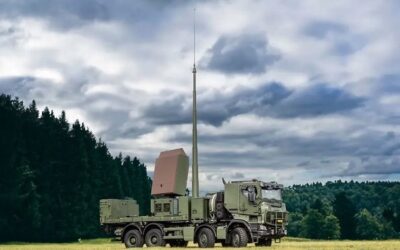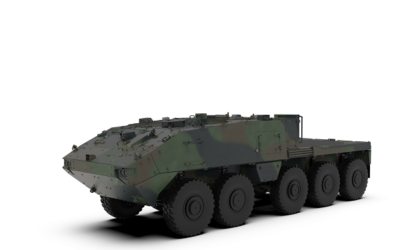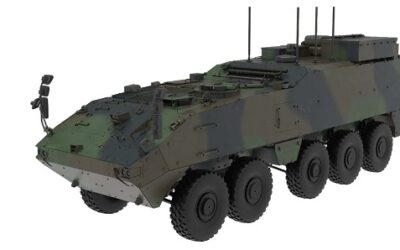MTSC Talks to Lockheed Martin’s Vic Torla at ITEC 2019
Vic Torla is Lockheed Martin’s Business Development Director for Training and a frequent commentator on the community’s issues. MTSC had the opportunity to sit and chew over some of the bigger issues facing training and simulation professionals during ITEC 2019 in Stockholm.
MTSC: VR, AR and MR – are they distinct disciplines or are they merging? And where are they headed?
VT: VR is part of our legacy. It’s well suited to certain applications and is accepted across a wide variety of users. For AR we are starting to see opportunities that generate really interesting capabilities. The digitisation of ranges, for example – the trainees see not simply ‘pop-up’ targets but real environments – moving vehicles, hostile and friendly troops, etc. – that really opens up the training opportunities.
I think MR, though, is currently in its infancy. It’s not really quite ready for prime time just yet, but it is certainly maturing. The question is going to be, ‘how do we place the soldier, sailor or airman in a physical environment coupled with the virtual experience and information that will inform realistic and effective training?’ Eventually, I see MR paving the way for elimination of domes in training, for instance: dramatically reducing the physical and logistic footprint of training solutions, making them more mobile, more effective and ultimately more results-oriented.
That is likely to pose something of a cultural challenge for acquisition organisations and that will require joint efforts to resolve. But the US Army’s Synthetic Training Environment (STE) initiative, for instance, is pushing and driving that agenda forward quite quickly.
We are inevitably moving into more open architectures – but in which there is no departure from the specific tactile task in front of the trainee – there is still an immersive character to the training environment and the nature of the architecture is hidden from the trainees. There is a strong customer desire for mission-level training – and MR is one of the components through which we can deliver that in connected, lower-fidelity (where appropriate) but still immersive solutions.
MTSC: Has technology insertion plateaued? Are we in danger of advancing technological solutions just because we can? Are customers able to keep up with the pace of innovation?
VT: There is a time and a place for saying “let’s do this because we can,” but not necessarily does a better training experience for the warfighter emerge from such an initiative. Innovation will not stop, however, and it is true to say that current infrastructure does afford additional technology insertion.
Using the example of range digitisation again, the improvements that have led to the addition of after action review capability have a powerful effect on the increased utility of ranges that have been around for decades. Further infrastructure development over time will enable augmented reality solutions to come into play, bring 4G and 5G capability to the training environment.
MTSC: What are the obstacles to and challenges for achieving real integrated LVC?
VT: The biggest issue is security. We have to crack that key challenge – especially for multiple levels of security – either within a training organisation or, more likely in the future, across multi-national or coalition training communities. We need cross domain solutions to deconflict levels of classification that will enable information and communication to be shared at will.
Technology is not the biggest challenge in itself but is a key component that needs to be addressed at every level. Bringing dissimilar architectures together to ensure the infrastructure does what it is supposed to and enables fusion and utilisation of disparate sources of information in a common centre – that’s where we need to go. Its complicated – but not exactly rocket science – in reality we need to realise this is no more difficult than what we have been asked to do in the past.
MTSC: How do you see the mid-term future characterised? A focus on recapitalisation or a concentration on comprehensive upgrades and modernisation?
VT: Our domestic and international customers have very different views on this. International customers in particular are having to ask themselves “do we want to take advantage of what industry is offering – do we recapitalise equipment or do we transition to procuring modelling and simulation as a service?” Cloud computing helps to steer that decision to a degree and you can see the results in programmes such as the Australian JP9711, for example, for which Lockheed Martin was recently down-selected.
It is true that industry has a responsibility in this. We need to integrate and act a little more seamlessly – and help the customer to do so, while hiding as much complexity as possible from the user. And architecture lies at the heart of that compatibility and interoperability issue.
Which does not necessarily mean there is not room for proprietary solutions as opposed to completely open architectures. I liken it to the iPhone, in which many proprietary applications operate in a common, open environment. The training provider wants the operational compatibility and is interested in the results – not necessarily in all the bells and whistles attaching to the individual app. The US Air Force SCARS programme is providing a good test for industry as it focuses on opening up the architecture and dealing with standards issues. At the end of the day, allowing plug and play for proprietary solutions may be far less of a problem than some predict. Which is one method of protecting and assuring a future for really valuable intellectual property.
MTSC: Thank you, Vic, for your time and refreshing candour. We look forward to early opportunities to continue some of these discussions with you, both here on MTSC and within the pages of Military Technology.
























